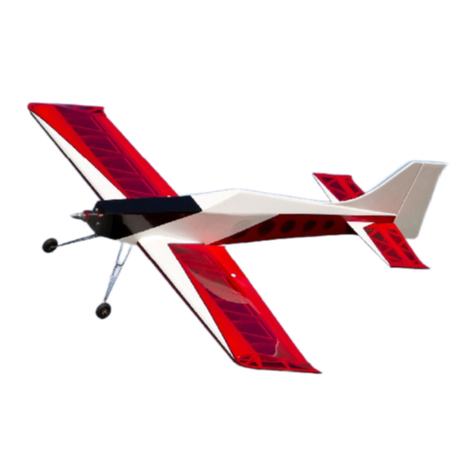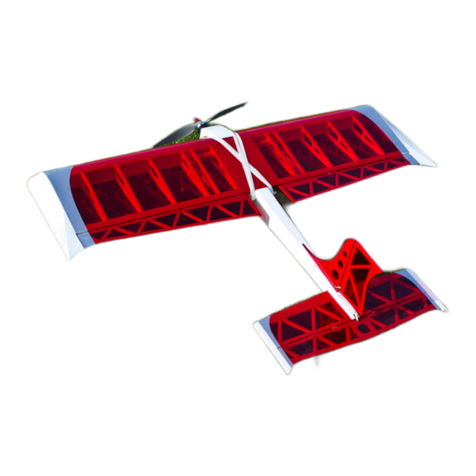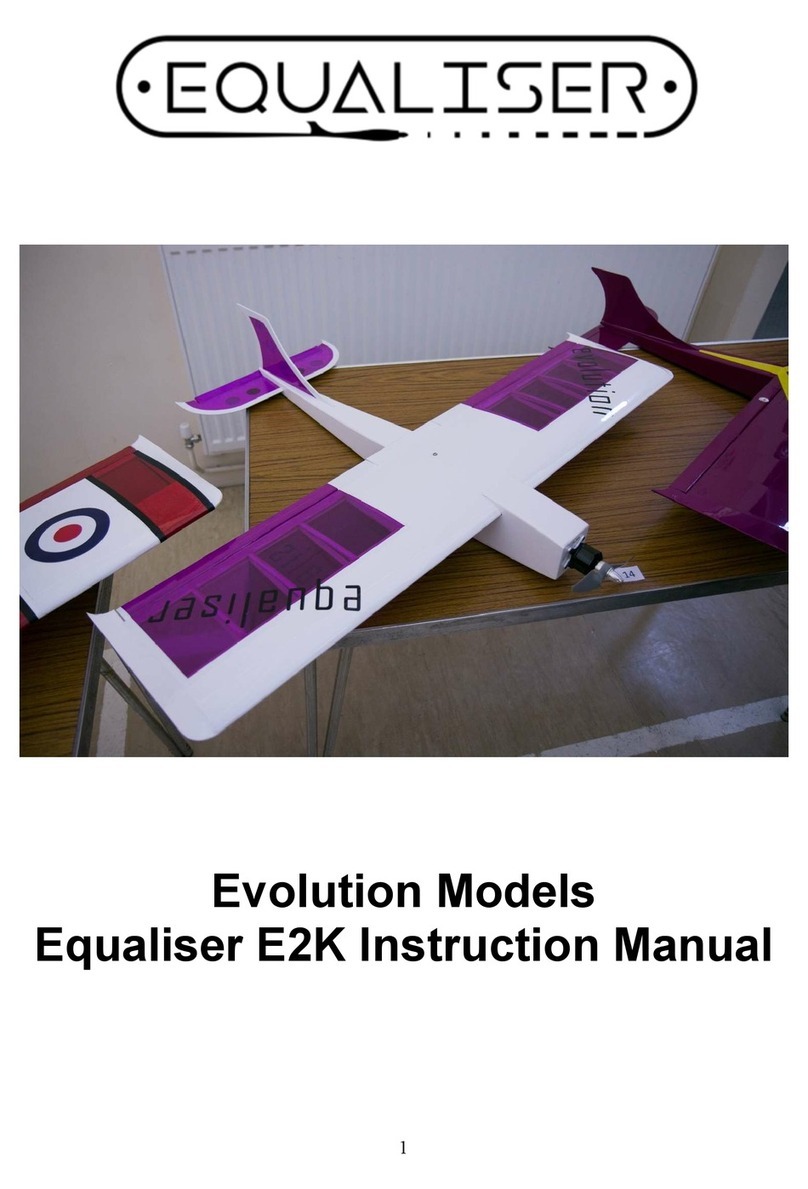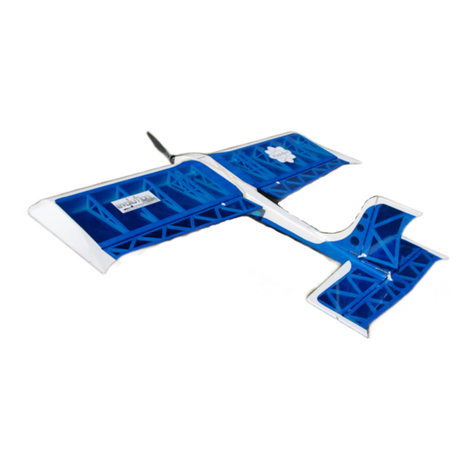
1
Introduction
The Mega Fusion was the natural progression from the Fusion. It can be used for a large model
trainer or glider tug (with appropriate alterations) as it provides a stable base which a pilot of any
experience will enjoy and feel confidence with. Wind up the rates and put a hot motor in it then like
the Fusion it will loop on the spot, roll in the blink of an eye, again, inspiring confidence as it
remains rock solid and stable. This model that has been designed to be highly manoeuvrable, but
also to be attractive with style and flair.
Building Recommendations (Please read)
Check all parts from the box to ensure that they are present; if not then please contact us at the e-
mail address at the back of the instructions. We do from time to time make mistakes!!
Ensure that you use a completely flat base on which to build the model, this should be large
enough the build the wing 50” (1270mm) x 18” (450mm) as a minimum.
Read through the instructions before starting to build, understand each step before applying glue.
Any glue detailed in the instructions is for a guide only, this is what we used for the prototypes, it is
at the builders discretion which glue is used, but ensure that it is suitable for the intended purpose.
Always read the application instructions to ensure you achieve a strong joint. Always read the
safety instructions supplied with the glue.
Take your time building the model, build a straight and strong model, this will ensure the model will
fly well!
!!! Warning. During the construction you will be asked to sand balsa. Ensure that you are wearing
an appropriate mask for sanding balsa and are in a well ventilated area. We recommend sanding
in free air (outside).!!!
Enjoy. Building is part of aero modelling! By building you will understand how the model works
and how to handle it correctly.
This radio controlled model is not a toy. It can cause serious injury to the operator, public and
property if misused or abused. Ensure that you read all the instructions supplied with this kit and
instructions provided with the engine and radio control system or any other components purchased
separately carefully. Also make sure that any parts bought separately are suitable for their
application.
The kit contains small and potentially sharp parts, keep away from children.
Additional Materials Required
Recommended Tools
Uhu Por
Cyano
Standard Thin or Medium Cyano
Aliphatic Wood Glue
Epoxy Resin
Tinned Copper Wire (For Undercarriage)
Solder
Heat Shrink Covering Material
Power Set or motor
Radio Gear
Modelling Knife
Razor Plane
Set Square
Sand Paper
Sanding Block
Blow Torch
Drill
Drill Bits
Building Board – Completely flat 1270 x
450mm Min
Please visit our online shop at www.evolution-models.com if you require any supporting materials.
We stock motors and ESCs and all the materials you will require to build your model.































